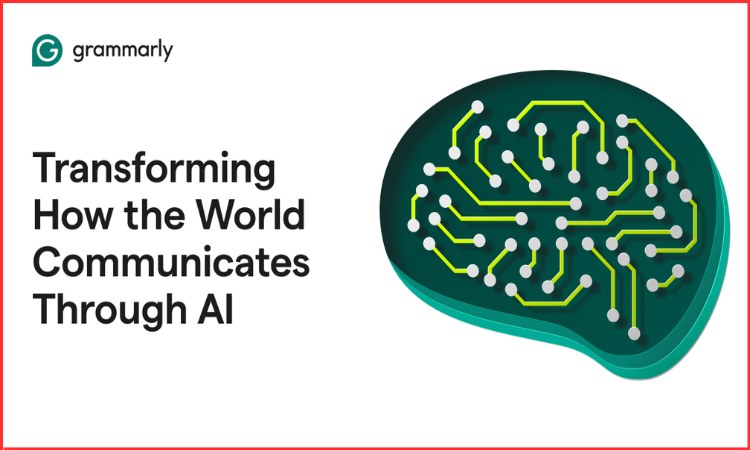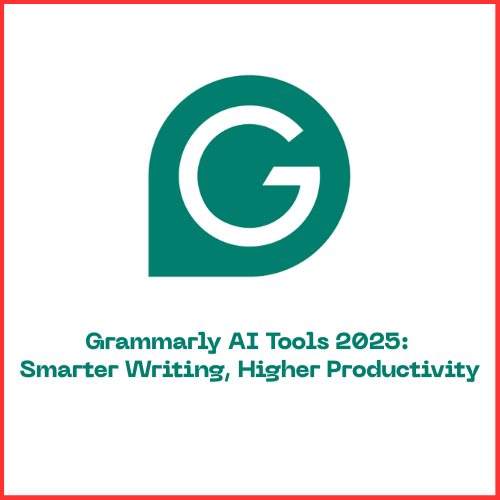
Digital tools are set to evolve in 2025. Grammarly, once known only as a grammar and spelling checker, has entered a bold new phase. Grammarly has grown from a simple writing tool into a full productivity platform, transforming how millions of professionals, students, and businesses work.
The evolution of technology aided by artificial intelligence has enabled this to happen. Advanced levels of machine learning and natural language processing now allow Grammarly to do more than make corrections – it helps with planning, drafting, editing, collaborating, and product task management. This transformation has positioned Grammarly right in the center of the global conversation around the future of productivity.
With new AI-powered agents and an acquiring company like Superhuman, Grammarly represents the next wave of platforms that will marry writing intelligence and productivity applications. In this blog, we will look at how Grammarly has changed, what innovations are fueling it, and how 2025 could be the year that Grammarly emerges as the ultimate AI-powered productivity partner.
Grammarly’s Evolution: From Writing Assistant to AI Powerhouse
Originally, Grammarly served as a helpful writing assistant that could help users combat grammar mistakes, spelling mistakes, and structure writing choices to the appropriate degree of tone. As millions adopted the tool, its value grew. With digital communication increasing, Grammarly shifted toward smarter and more integrated applications. In 2025, Grammarly has gone through what can only be described in science-fiction terms.
It is no longer just a checker. Grammarly is now part of the AI revolution, offering a productivity platform that improves both writing and overall efficiency. As noted by the Hindustan Times, they have just launched nine distinct AI agents to help with various forms of work, from ideation to writing and editing a professional report. This marks the moment when Grammarly successfully transitions from an app purely of one purpose to an entire productivity platform.
Grammarly’s AI Agents: The Pillars of Productivity
One of the big highlights of Grammarly’s story is its system of AI agents. According to LinkedIn Pulse, Grammarly’s agents have specialized roles:
Idea Generation: A brainstorming agent with creative ideas.
Research Assistant: An agent that pulls all the info you would need to build your docs.
Drafting: An agent that builds coherent content with speed and compatibility.
Editing: An agent that improves readability and structure.
Professional Tone: An agent that ensures your communication is aimed at your audience.
Learning Support: An agent that supports students with academic writing.
Email Response: An agent that creates time-saving replies.
Collaboration: An agent that improves teamwork and written collaborations through a sharing of writing style.
Task Management: An agent that connects writing with other parts of the workflow.
These agents go beyond fixing mistakes; they boost productivity across sectors. Together, these agents simplify workflows and reduce the time wasted switching between apps.
The Superhuman Acquisition: A Step Towards Productivity Leadership
In 2024, Grammarly purchased Superhuman, a reputable email productivity startup. DevX reported this move was intended due to Superhuman’s established pioneering in speeding up email management, and Grammarly capitalized on that to be included in their tool.
The acquisition is a clear indication of Grammarly wanting to be more than a writing tool. It is aimed to create a fully-fledged productivity centre where writing and communication tasks converge with more productivity tasks. They are moving on to email, and now Grammarly users can have workflows incorporated into their tool, from writing a proposal to sending a polished email, all in the space of a tool.
The Significance of Grammarly’s AI Revolution in 2025.
This shift is not just about adding features to how we use Grammarly. It is about reimagining our relationship with productivity in the digital age. In 2025, work has become global and fast-paced, and the trend to work more collaboratively, all while working remotely, is on the rise. Teams today rely on clear and effective communication, and Grammarly’s AI revolution helps address these challenges.
Here are some of the impacts:
Saving Time – Professionals will spend less time editing their written communication and bouncing between software.
Building Confidence – Users feel confident that their communication is entirely professional.
Facilitating Collaboration – Teams can better align on tone and style.
Enhancing Learning – Students receive guided support instead of simplistic edits.
Grammarly is a distinct writing assistant program that combines writing support with productivity, as opposed to generative text.
Grammarly vs Other AI Writing Assistants
While the landscape is saturated with AI-driven tools like ChatGPT, Jasper, and Writesonic, Grammarly’s niche is special. While other tools generate content quickly, Grammarly focuses on productive writing quality integrated into workflows.

Source: Yomu
Grammarly established trust and accuracy without competing as a generic text generator. Business users, students, and professionals rely on Grammarly not just to edit content but also to manage communication. This is one reason Grammarly continues to maintain its lead.
The Productivity Platform of the Future
By the year 2025, Grammarly will have matured into a full productivity platform. The features include:
AI drafting and AI editing
Team-level collaboration tools
Email and communication integration
Project and task mapping
Growth and productivity coaching based on personal behaviors.
This complete approach has turned Grammarly into less of an application and more of an ecosystem. Grammarly has received over $1 billion (as reported at The Times) in funding to push this agenda. While many companies see AI only as a productivity tool, Grammarly believes it offers more than automation. It is the human impact that is the priority going into the future.
The AI Future and a New Role for Grammarly
The AI revolution has disrupted every industry space, from healthcare to finance. Extending into productivity indicates that Grammarly’s noticing AI does not just involve automation, but heralds an era in which AI will enable humans to accomplish higher-order work. Here are three examples:
A student can ideate, draft, and polish a paper with one tool.
A marketing team can create brand voice consistency and collaborative decision-making across campaign copies.
A remote worker can manage projects, emails, and reports without constantly switching apps.
Grammarly is also now a case study of how AI saturates a company’s DNA, which maintains innovation without sacrificing user trust.
Future Outlook of Grammarly
Looking into the future, Grammarly’s roadmap indicates even deeper embeddedness into the daily workflows of many. Predictions include:
More significant platform agnosticism and integration with tools such as Slack and Google Workspace.
More advanced industry-specific autonomous AI agents trained for distinct tasks.
Staff dashboards are personalized to assist, evaluate, and gauge productivity.
Expansion into the global language spaces, creating a universal assistant.
As AI adoption becomes increasingly prevalent, and individuals become accustomed to relying on complete productivity platforms like Grammarly, it could be indicative of how humans collaborate with AI.
Conclusion
For Grammarly, the story of the revolution of their AI is much more than simply a new product; it is a barometer of how technology invariably changes with the needs of humans. What began as a user-friendly writing assistant will become a complete productivity platform by 2025.
With AI agents, smart partnerships, and a vision for better work, Grammarly is shaping the future of communication and collaboration. If the digital world continues to operate at a rapid speed and becomes increasingly complicated. Grammarly shows that AI can empower people to be creative and productive, rather than replace them.
FAQs
1. What is unique about Grammarly compared to the other AI writing tools?
Unlike standard writing assistant tools, Grammarly is part writing support and part collaborative productivity tool with email capabilities and task management, so it is more than a text generator.
2. How many AI agents does Grammarly have?
According to Hindustan Times, Grammarly released nine AI agents in 2024 to help users with different aspects of writing and productivity.
3. Why did Grammarly purchase Superhuman?
The goal of the acquisition was to advance Grammarly’s communication and productivity platform so that it could be seamless within the email experience of users.
4. Is Grammarly of any assistance for students, even in 2025?
Yes, in addition to corrections that are useful for students, Grammarly has grown beyond corrections and is now an academic aid for research, drafting, and academic communications.
5. Can Grammarly replace other productivity apps?
It’s not a complete substitute, but it can serve as a consolidated home base, reducing the need for several apps within workflows.

